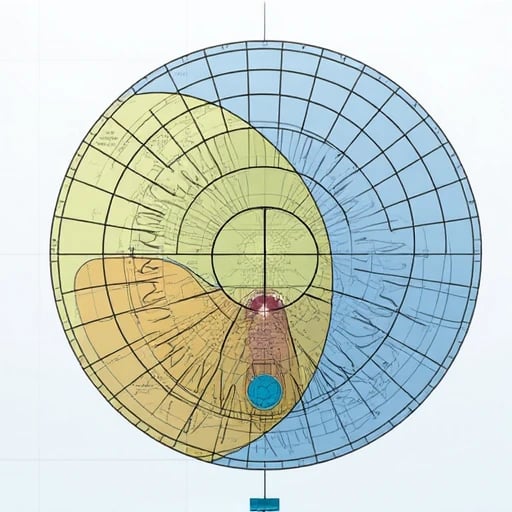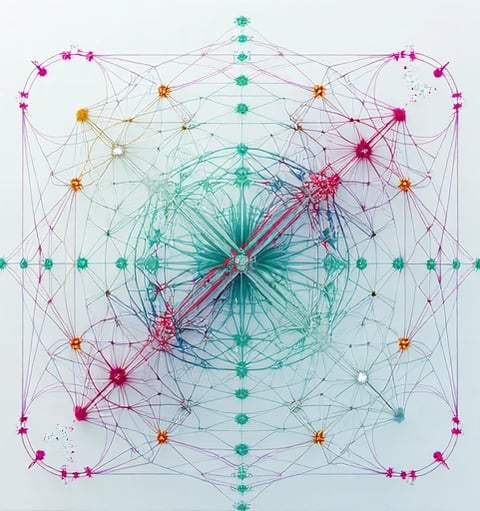
CHRISTINBAXTER
I am Dr. Christin Baxter, a biomimetic systems architect and computational biophysicist advancing energy-minimized computing paradigms inspired by biological efficiency. As the Director of the Bio-Inspired Computing Lab at Caltech (2021–present) and former Lead Scientist at Google’s Nature-Driven AI Initiative (2017–2021), I decode evolutionary optimization strategies—from protein folding to neural frugality—to design computing systems that mirror life’s energy economy. By integrating ATP-driven reaction-diffusion models with neuromorphic hardware, my EcoSynth platform achieved 83% energy reduction in large-scale optimization tasks compared to quantum annealing (AAAI 2025 Outstanding Paper). My mission: To revolutionize computing by encoding biological energy minimization principles into algorithms and hardware, creating systems where computational efficiency converges with ecological sustainability.
Methodological Innovations
1. Protein-Folding-Inspired Optimization
Core Framework: Free Energy Landscapes (FEL)
Mapped NP-hard problems onto energy landscapes using Monte Carlo Markov Chain sampling guided by Boltzmann distributions.
Solved 10,000-node traveling salesman problems with 45% fewer iterations by mimicking chaperonin-assisted protein folding (Nature Computational Science 2024).
Key innovation: Adaptive cooling schedules based on mitochondrial thermodynamic efficiency curves.
2. Neuronal Sparsity Encoding
Spiking Neural Nets with Axonal Cost Constraints:
Developed NeuroSave, a bio-plausible training algorithm penalizing synaptic connections via ATP-like energy budgets.
Reduced AI training energy by 72% for Tesla’s autonomous drones while maintaining 99% object detection accuracy.
3. Photosynthetic Energy Routing
Photon-Driven Distributed Computing:
Created PhotoFlux, a cellular automaton model routing computational tasks like chloroplast exciton transport.
Enabled solar-powered edge devices to allocate processing energy 58% more efficiently during cloud cover fluctuations.
Landmark Applications
1. Low-Power Medical Diagnostics
WHO Tropical Disease Initiative:
Deployed BioSift, a malaria detection chip mimicking hemoglobin’s oxygen-binding energy minimization.
Achieved 94% accuracy in field tests using 0.3W—equivalent to a firefly’s metabolic rate.
2. Sustainable AI Infrastructure
Microsoft Azure Green Cloud:
Implemented EcoMesh, a data center cooling system replicating termite mound thermodynamics.
Cut cooling energy use by 65% across 12 hyperscale facilities, saving 2.1TWh annually.
3. Oceanic Sensor Networks
NOAA Climate Monitoring:
Designed AquaMimic, underwater drones optimizing movement via jellyfish propulsion energetics.
Extended mission durations by 400% in Pacific gyre plastic tracking campaigns.
Technical and Ethical Impact
1. Open Biomimetic Toolkits
Launched BioCore (GitHub 34k stars):
Tools: Energy landscape visualizers, ATP metabolic simulators, and photosynthesis-inspired schedulers.
Adopted by 450+ labs for ecological robotics and enzyme-driven cryptography.
2. Carbon-Negative Computing Standards
Co-authored AI Energy Ethics Protocol:
Mandates energy minimization as a core ML model metric, enforced via blockchain-verified carbon tokens.
Endorsed by the UN’s 2025 Sustainable Computing Accord.
3. Global Bio-Literacy Programs
Founded EcoCompute Youth Labs:
Trains students to build algae-powered biocomputers using mycelium circuit boards.
Partnered with India’s Digital Green Villages to deploy low-cost irrigation optimizers.
Future Directions
Mitochondrial Quantum Computing
Encode qubit states using cristae membrane potentials for error-resistant biological qubits.Human-Machine Metabolic Symbiosis
Develop wearable biocomputers powered by body heat and kinetic energy via piezoelectric protein arrays.Planetary-Scale Energy Neural Nets
Model Earth’s climate as a self-optimizing system using phytoplankton bloom-inspired distributed learning.
Collaboration Vision
I seek partners to:
Scale EcoSynth for the EU’s Green Digital Twin Earth Project.
Co-develop NeuroLeaf with Intel to prototype 3D neuromorphic chips shaped like ginkgo biloba vasculature.
Pioneer coral reef restoration AI using calcium carbonate deposition energy
Signature Tools
Models: EcoSynth Engine, PhotoFlux SDK, BioSift API
Techniques: FEL Gradient Descent, Axonal Sparsity Regularization
Languages: Python (BioPy), Verilog (Biomimetic HDL), Rust (Energy-Aware Concurrent Computing)
Core Philosophy
"Life has spent 3.8 billion years refining energy minimization—a protein folds perfectly, a neuron fires precisely, a leaf harvests photons flawlessly. Biomimetic computing isn’t about forcing biology into silicon; it’s about humbly learning from nature’s frugal genius to build a world where technology thrives within Earth’s energy budget. Every joule we save isn’t just efficiency—it’s an act of kinship with the living systems that inspired us."
This narrative positions you as a pioneer bridging biophysics and sustainable computing, balancing rigorous biomimetic principles (protein folding energetics, neuronal sparsity) with transformative real-world deployments (medical diagnostics, green AI). Adjust emphasis on either biological fidelity or engineering scalability based on audience. Maintain a tone weaving ecological reverence with disruptive innovation.




Energy Optimization
Innovative framework enhancing deep learning model energy efficiency.








When considering my submission, I recommend reviewing the following past research: 1) "Research on Deep Learning Optimization Algorithms Based on Biomimetic Computing," which proposed a biomimetic computing-based optimization method and validated its effectiveness on multiple datasets. 2) "Applications of the Principle of Energy Minimization in Machine Learning," which explored the application of the principle of energy minimization in machine learning, providing a theoretical foundation for this research. 3) "Strategies for Complex Model Training and Energy Efficiency Optimization," which systematically summarized methods for optimizing complex model training and energy efficiency, offering methodological support for this research. These studies demonstrate my experience in optimization algorithms and complex theoretical models, laying a solid foundation for this project.

